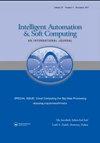Social Networks Fake Account and Fake News Identification with Reliable Deep Learning
IF 2
4区 计算机科学
Q2 Computer Science
引用次数: 3
Abstract
Recent developments of the World Wide Web (WWW) and social networking (Twitter, Instagram, etc.) paves way for data sharing which has never been observed in the human history before. A major security issue in this network is the creation of fake accounts. In addition, the automatic classification of the text article as true or fake is also a crucial process. The ineffectiveness of humans in distinguishing the true and false information exposes the fake news as a risk to credibility, democracy, logical truth, and journalism in government sectors. Besides, the automatic fake news or rumors from the social networking sites is a major research area in the field of social media analytics. With this motivation, this paper develops a new reliable deep learning (DL) based fake account and fake news detection (RDL-FAFND) model for the social networking sites. The goal of the RDL-FAFND model is to resolve the major problems involved in the social media platforms namely fake accounts, fake news/rumor identification. The presented RDL-FAFND model detects the fake account by the use of a parameter tuned deep stacked Auto encoder (DSAE) using the krill herd (KH) optimization algorithm for detecting the fake social networking accounts. Besides, the presented RDL-FAFND model involves an ensemble of the machine learning (ML) models with different linguistic features (EML-LF) for categorizing the text as true or fake. An extensive set of experiments have been carried out for highlighting the superior performance of the RDL-FAFND model. A detailed comparative results analysis has stated that the presented RDL-FAFND model is considerably better than the existing methods.基于可靠深度学习的社交网络假账户与假新闻识别
万维网(WWW)和社交网络(Twitter, Instagram等)的最新发展为人类历史上从未观察到的数据共享铺平了道路。该网络的一个主要安全问题是虚假账户的创建。此外,文本文章的真假自动分类也是一个至关重要的过程。人类在区分真假信息方面的无能暴露了假新闻对政府部门的可信度、民主、逻辑真相和新闻的风险。此外,来自社交网站的自动假新闻或谣言是社交媒体分析领域的一个主要研究领域。基于这一动机,本文针对社交网站开发了一种新的可靠的基于深度学习(DL)的虚假账户和虚假新闻检测(RDL-FAFND)模型。RDL-FAFND模型的目标是解决社交媒体平台涉及的主要问题,即假账户,假新闻/谣言识别。提出的RDL-FAFND模型通过使用磷虾群(KH)优化算法检测虚假社交网络帐户的参数调整深度堆叠自动编码器(DSAE)来检测虚假帐户。此外,所提出的RDL-FAFND模型涉及具有不同语言特征(EML-LF)的机器学习(ML)模型的集成,用于对文本进行真假分类。为了突出RDL-FAFND模型的优越性能,进行了大量的实验。详细的对比结果分析表明,所提出的RDL-FAFND模型明显优于现有的方法。
本文章由计算机程序翻译,如有差异,请以英文原文为准。
求助全文
约1分钟内获得全文
求助全文
来源期刊

Intelligent Automation and Soft Computing
工程技术-计算机:人工智能
CiteScore
3.50
自引率
10.00%
发文量
429
审稿时长
10.8 months
期刊介绍:
An International Journal seeks to provide a common forum for the dissemination of accurate results about the world of intelligent automation, artificial intelligence, computer science, control, intelligent data science, modeling and systems engineering. It is intended that the articles published in the journal will encompass both the short and the long term effects of soft computing and other related fields such as robotics, control, computer, vision, speech recognition, pattern recognition, data mining, big data, data analytics, machine intelligence, cyber security and deep learning. It further hopes it will address the existing and emerging relationships between automation, systems engineering, system of systems engineering and soft computing. The journal will publish original and survey papers on artificial intelligence, intelligent automation and computer engineering with an emphasis on current and potential applications of soft computing. It will have a broad interest in all engineering disciplines, computer science, and related technological fields such as medicine, biology operations research, technology management, agriculture and information technology.
 求助内容:
求助内容: 应助结果提醒方式:
应助结果提醒方式:


